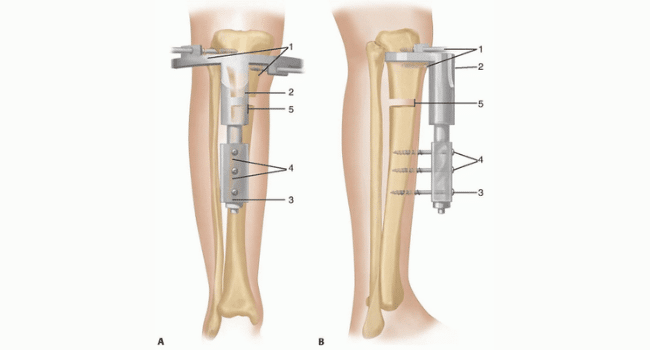Table of Contents
The medical field is evolving consistently and that too at a good pace. Continuous advancements in science & technology have been beneficial for both the users and experts in their relative fields. The orthopedic sector has also seen many revolutionary changes in the last few decades and that has made the management of serious orthopedic injuries better and easier.
If we talk about one of the best examples of what the orthopedics sector has gained in the last few decades, then it would be limb reconstruction. This will be our focus in this post. Before going ahead, let us have a look at what limb reconstruction is.
What is Limb Reconstruction?
Limb reconstruction is an orthopedic procedure carried out with the aim to bring abnormal limbs back to normal. It is a surgical procedure that involves the use of an LRS External Fixator and other orthopedic implants. This surgical technique is known to be fruitful where the limb is in abnormal shape or length plus, its normal functioning is also affected. There are many techniques that could be used for limb reconstruction and some of those may include realignment of bones, correct positioning, joint stabilization, or increasing the length of the bones. The choice of procedure used will depend upon the patient’s condition.
Certain conditions that could be treated with limb reconstruction may include the congenital short femur, fibula hemimelia, congenital tibial pseudarthrosis, or fibrous dysplasia.
What are the Causes of Abnormal Limb?
A limb may become abnormal due to several reasons, for example, congenital (by birth), due to high-energy trauma, bone infections, and growth-related problems. The type of abnormality in the limb and its cause will decide the limb reconstruction procedure used by the surgeon.
What is the Principle Behind Limb Reconstruction?
The principle behind limb reconstruction is distraction histogenesis. Under proper conditions, bone is known to respond to gradual mechanical distraction with the formation of new bone, and this property of bones is used during limb reconstruction surgery.
During limb reconstruction, the bone is cut and separated gradually using a specially designed orthopedic implant known as Ring External Fixator. Now, the gap created by the cutting of bone is filled with the newly formed bone thus, helping in the lengthening of the limb. Besides the bone, new nerves, blood vessels, and muscles also develop by cell multiplication.
Different Types of Limb Lengthening and Reconstruction Surgeries
There are 5 types of limb lengthening and reconstruction surgeries possible:
- Gradual limb lengthening and deformity correction
- Limb shortening
- Acute deformity correction
- Epiphysiodesis
- Hemiepiphysiodesis
The Bottom Line
Deformities or other abnormalities in the limb could be congenital or acquired. When it comes to congenital limb deformities, then they are from birth only. While on the other hand, acquired deformities or abnormalities occur due to trauma or infections. To correct those, limb reconstruction surgery is the best option available. External LRS fixators are one of the most commonly used trauma implants for this surgical procedure. Whereas other types of fixators could also be used depending upon the condition of the patient.
This post focused on limb reconstruction along with the conditions in which it is required. We hope that it would have been helpful and solved your purpose of landing here.
To get ISO standard quality Orthopedic Implants like LRS External Fixator, Ilizarov External Fixator, and Tubular External Fixator, contact Siora surgicals Pvt. Ltd.
Read More on KulFiy:
